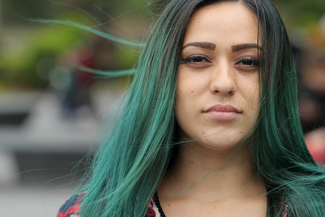
Young Women's Justice Project
Engaging with young women, front-line staff and other experts to build an evidence base about the needs of girls and young women in contact with the criminal justice system.

13 Jan 2021
The vast majority of girls and young women who commit crime have experienced significant disadvantage and trauma, according to a report by Agenda, the alliance for women and girls at risk and the Standing Committee for Youth Justice (SCYJ).
The Young Women’s Justice Project literature review highlights appalling rates of violence and abuse experienced by young women in contact with the criminal justice system. They were also more likely to have been in care, have mental health problems and to have lived in poverty.
The report, released today and funded by the Lloyds Bank Foundation for England and Wales, argues that young women and girls who face abuse and disadvantage often do not get enough support in the community until is too late and sometimes not at all. They are calling for action to ensure fewer vulnerable women and girls end up in the criminal justice system as a result.
It also raises concerns that once in the criminal justice system young women are overlooked – and not enough is known or understood about their needs and experiences.
The report, which brings together existing data and research, shows that:
Jessica Southgate, CEO of Agenda, says:
“The vast majority of young women in contact with the criminal justice system have experienced significant trauma and disadvantage. This can be a key driver for their offending, whether that is being coerced into crime by a partner, sexually exploited or using drugs or alcohol to cope with what they have experienced.
“In spite of that, when they then come into contact with the criminal justice system, too often the response does more harm than good or is retraumatising, such as the use of force, restraint or isolation.
“We need to be doing a lot better at recognising and responding to the needs of vulnerable girls and young women in the community before we reach this stage.
“This means more investment in specialist support but also a concerted and co-ordinated effort by the government to ensure girls and young women are no longer an afterthought.”
Pippa Goodfellow, Director of the Standing Committee for Youth Justice, says:
“Girls and young women who have contact with the criminal justice system are too often ignored, misunderstood and misrepresented. A minority within a minority, little is understood about their experiences.
“This is a critical time in girls and young women’s lives, but often the transition between youth and adult systems feels like a cliff edge when services change or support falls away completely.
“We need a much clearer picture of what is going on at this point – better research and data gathering on girls and young women’s experiences – to inform better systems, services and support across all stages the criminal justice system. Putting gender high up on the policy agenda is long overdue.”
The report is available here.
(1) Bateman, T. and Hazel, N. (2014), Resettlement of girls and young women: Research report, London: Beyond Youth Custody.
(2) Wong, K. et al. (2017) T2A Final Process Evaluation Report
(3) Ministry of Justice (2015) The Harris Review – Changing Prisons, Saving Lives: Report of the Independent Review into Self-inflicted Deaths in Custody of 18-24 year olds
(4) Ministry of Justice (2019) Race and the criminal justice system statistics 2018, Ch 6